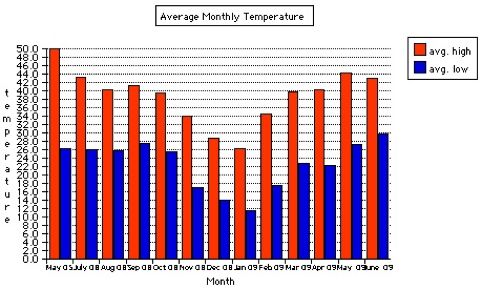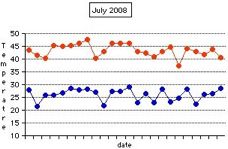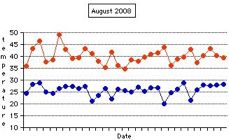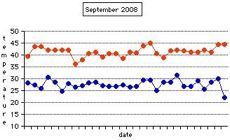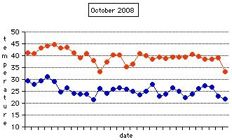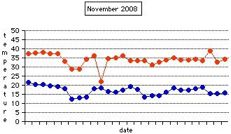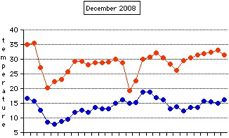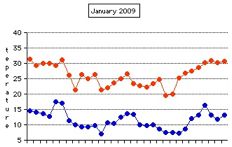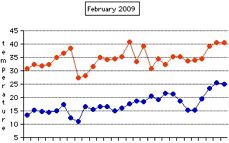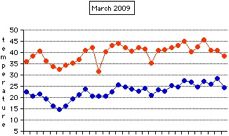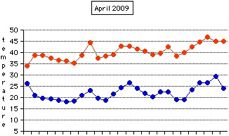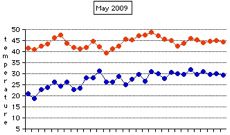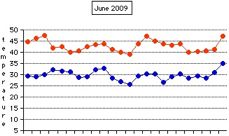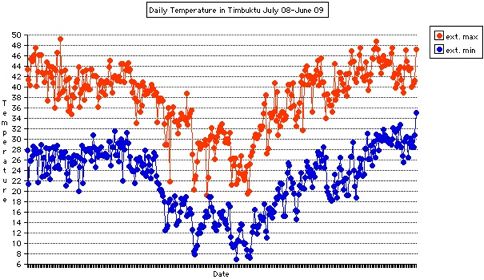
This chart shows the daily highs and lows for July 2008 through April 2009. These temperatures were taken out of doors in the shade though due to the insulating factor of the proximity to the buiding where the thermometer was placed could lead to slightly lower highs in the day and slightly higher lows in the night than would be measured in the open air. All Temperatures shown are in degrees Centegrade.
The climate is characterized by three principal seasons.
The Hot season (March - June)
The Rainy season (July -October)
The Cold season (November-February)
These seasons gradually shift from one to the next and in some local languages they have terms for two short transitional seasons that mark the change from the hot to the rainy and the rainy to the cold. Thus the temperature gradually increases starting from the end of February and by the end of March it is defiantly hot. April and May are super hot. In June the first rumbling of coming storms begin to manifest.

By July there are definitely storms, which in Timbuktu, are heralded by a growing clowd on the northern or eastern horizon and perhaps thunder and lightning. A dust storm blows across the land and may or may not be followed by rain. The sky is hazy and stuffy with humidity prior to the storms. The rain, if it comes, pulls the dust out of the atmosphere and the temperature drops (even if the rain fell at least nearby). These storms are common throughout July and August and peter out in September. Through this time the temperature lowers some but it is difficult to appreciate it as the increased humidity negates the effect.
There may be a last rain in October but with the reduction of humidity as the season ends you can feel that the base temperature has lowered. Through November the temperature slowly decreases, the months of December and January being agreeable during the day and genuinely cool at night. By February the temperature begins to rise again.
Typically the daily highs are quite high but the lows are tolerable even in the hottest months. Yet in the last couple of years night time temperatures have not decreased as much.
Below are average temperature statistics for Timbuktu for the year 2008 2009 I have just a snippet of data from 2005; as you can see the average lows for the month of May 2005 are equal to the lows of October in 2008 despite the fact the the highs are much greater.
